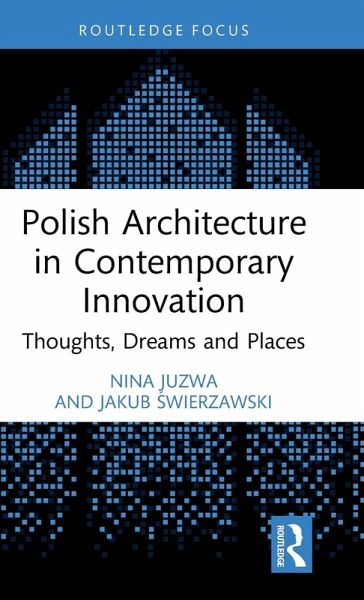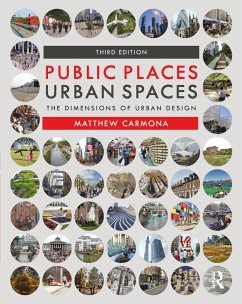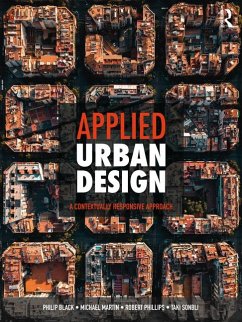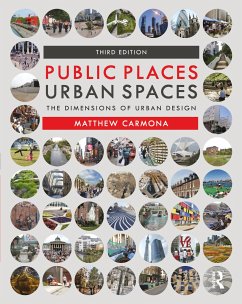
Polish Architecture in Contemporary Innovation
Thoughts, Dreams and Places
Versandkostenfrei!
Versandfertig in 6-10 Tagen
59,99 €
inkl. MwSt.
Weitere Ausgaben:

PAYBACK Punkte
30 °P sammeln!
Authored by two architects, Polish Architecture in Contemporary Innovation: Thoughts, Dreams and Places tells a story of buildings that were built in Poland between 1980 and 2020, as architecture developed in the Western world and Japan. Its main focus is public utility buildings which the authors "have touched" in situ and which have moved them or sparked their interest. The book is divided into three parts:Part I focuses on the problem of creating and shaping architectural form and uses examples of both international and Polish architecture. In this section, the authors pose the question: wh...
Authored by two architects, Polish Architecture in Contemporary Innovation: Thoughts, Dreams and Places tells a story of buildings that were built in Poland between 1980 and 2020, as architecture developed in the Western world and Japan. Its main focus is public utility buildings which the authors "have touched" in situ and which have moved them or sparked their interest. The book is divided into three parts:
Part I focuses on the problem of creating and shaping architectural form and uses examples of both international and Polish architecture. In this section, the authors pose the question: why is the Pritzker Prize so important?Part II attempts to answer the question of how architecture can change the image of a place. The answer consists of mainly Polish examples of user-friendly architecture, value, and beauty in architecture and place. Part III analyses buildings that were created in contemporary Poland. Examples are listed in groups, according to their function, pointing out forms that were inspired by the culture of the region, the historical culture of the place, or those which are a new quality and are the foundation of the creation of a place.
This book aims to demonstrate Polish architectural solutions in the context of contemporary trends in the West, traditionally seen as more technically and technologically developed countries. The floor plans and sections of the buildings presented in the book show the beauty of geometric and formal solutions and give a new and rare perspective on the latest changes in modern Polish architecture. This book will be of interest to architects as well as researchers and students of contemporary Polish architecture and culture and its place in the European and international context.
The Polish edition of this book, published in 2021 by the National Institute of Architecture and Urban Planning in Warsaw, received the Vitruvius Prize 2022 by the Architecture and Urban Planning Committee of the Polish Academy of Sciences.
Part I focuses on the problem of creating and shaping architectural form and uses examples of both international and Polish architecture. In this section, the authors pose the question: why is the Pritzker Prize so important?Part II attempts to answer the question of how architecture can change the image of a place. The answer consists of mainly Polish examples of user-friendly architecture, value, and beauty in architecture and place. Part III analyses buildings that were created in contemporary Poland. Examples are listed in groups, according to their function, pointing out forms that were inspired by the culture of the region, the historical culture of the place, or those which are a new quality and are the foundation of the creation of a place.
This book aims to demonstrate Polish architectural solutions in the context of contemporary trends in the West, traditionally seen as more technically and technologically developed countries. The floor plans and sections of the buildings presented in the book show the beauty of geometric and formal solutions and give a new and rare perspective on the latest changes in modern Polish architecture. This book will be of interest to architects as well as researchers and students of contemporary Polish architecture and culture and its place in the European and international context.
The Polish edition of this book, published in 2021 by the National Institute of Architecture and Urban Planning in Warsaw, received the Vitruvius Prize 2022 by the Architecture and Urban Planning Committee of the Polish Academy of Sciences.














